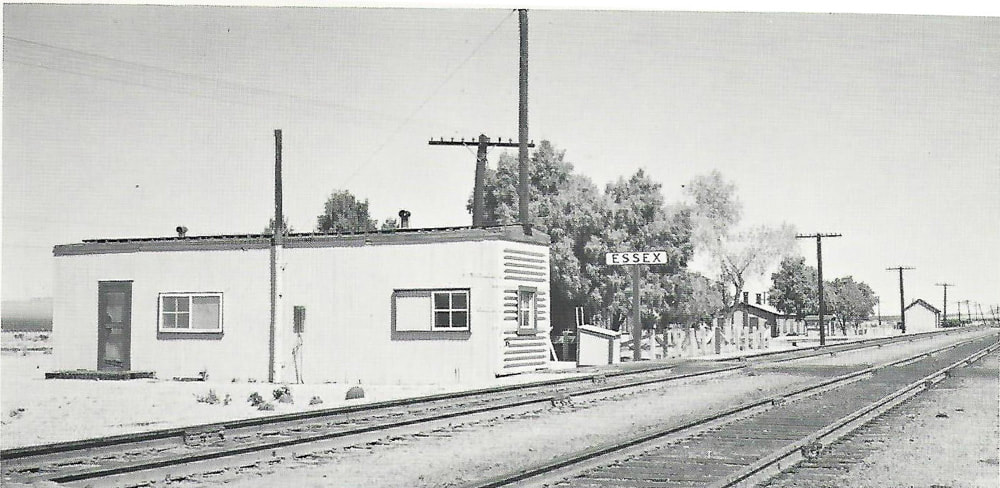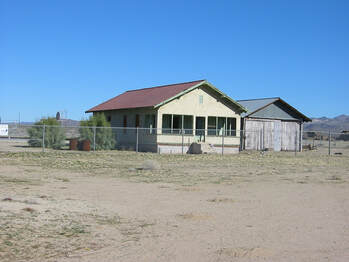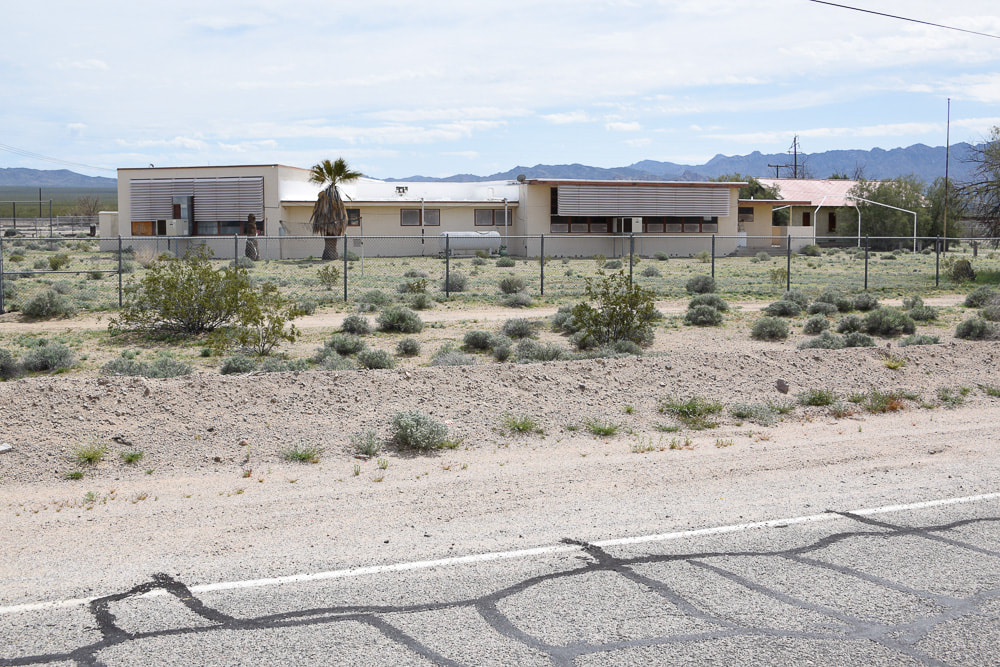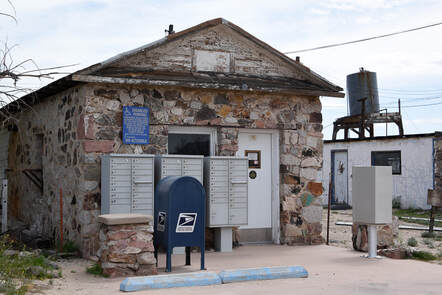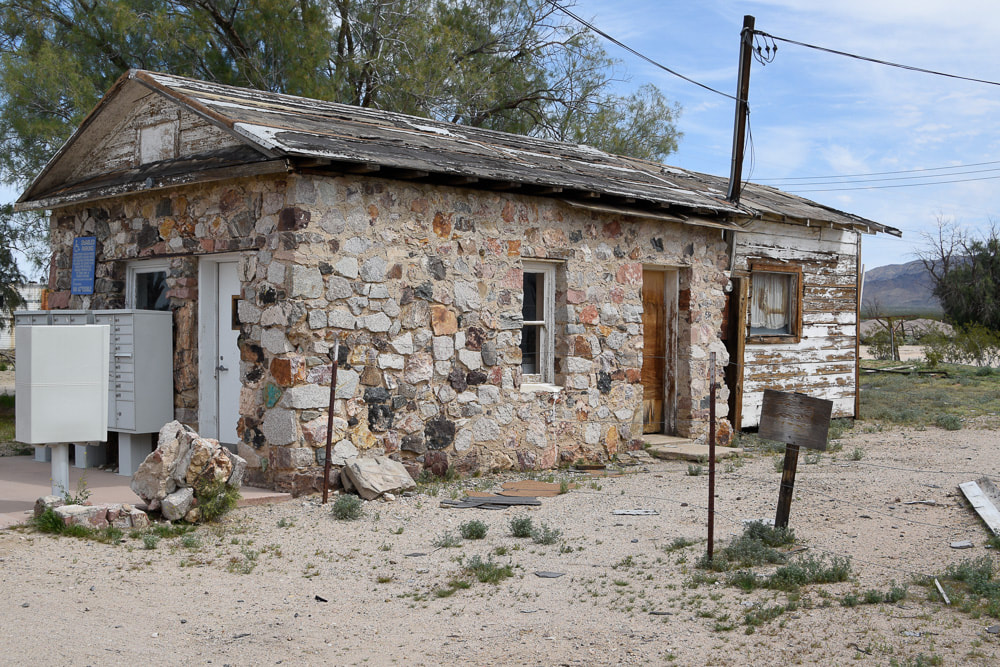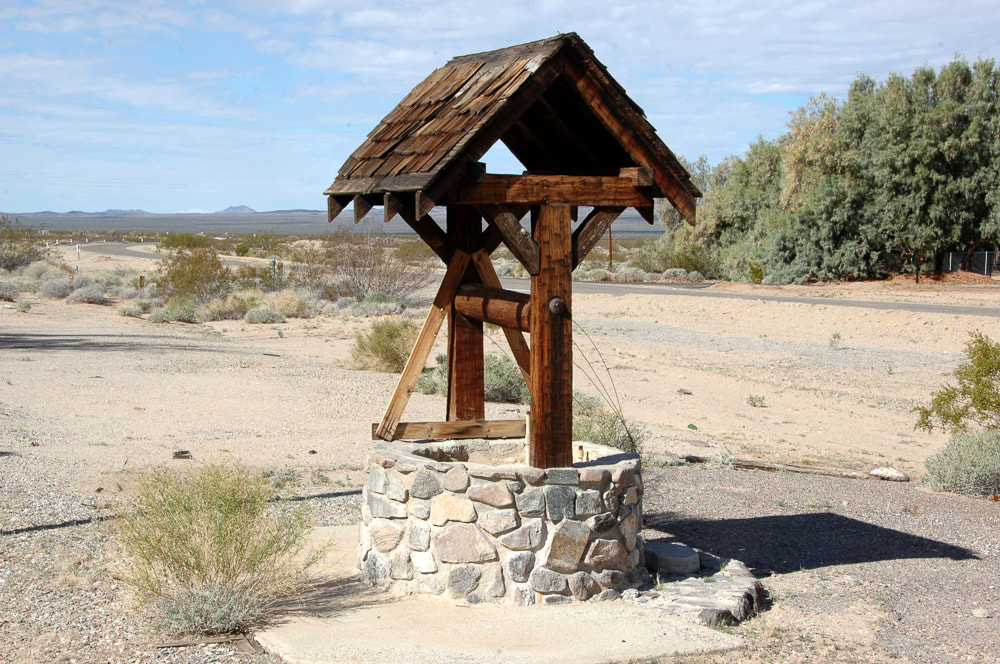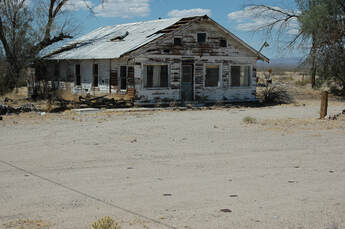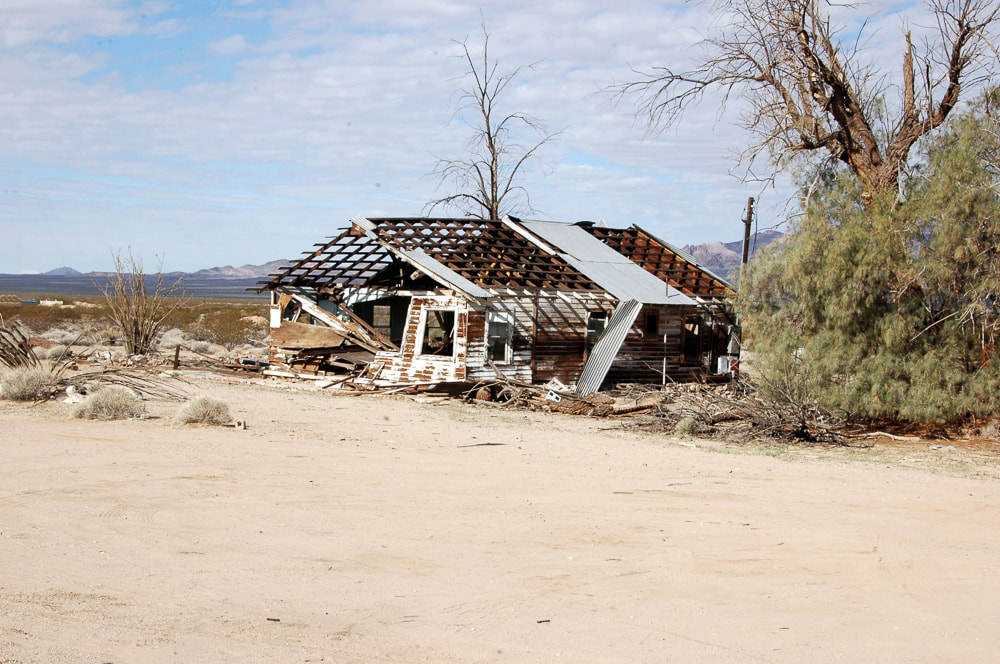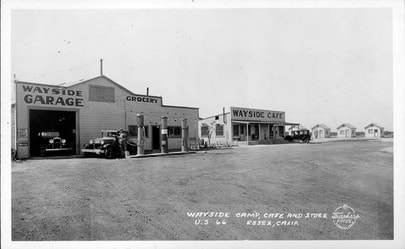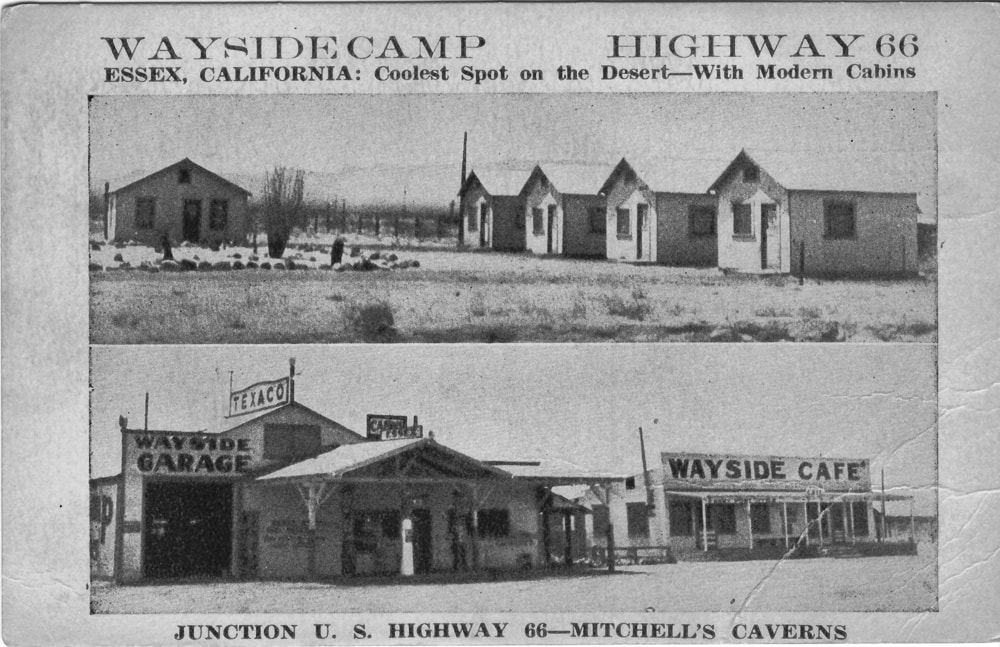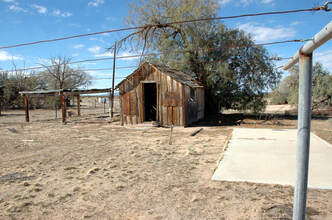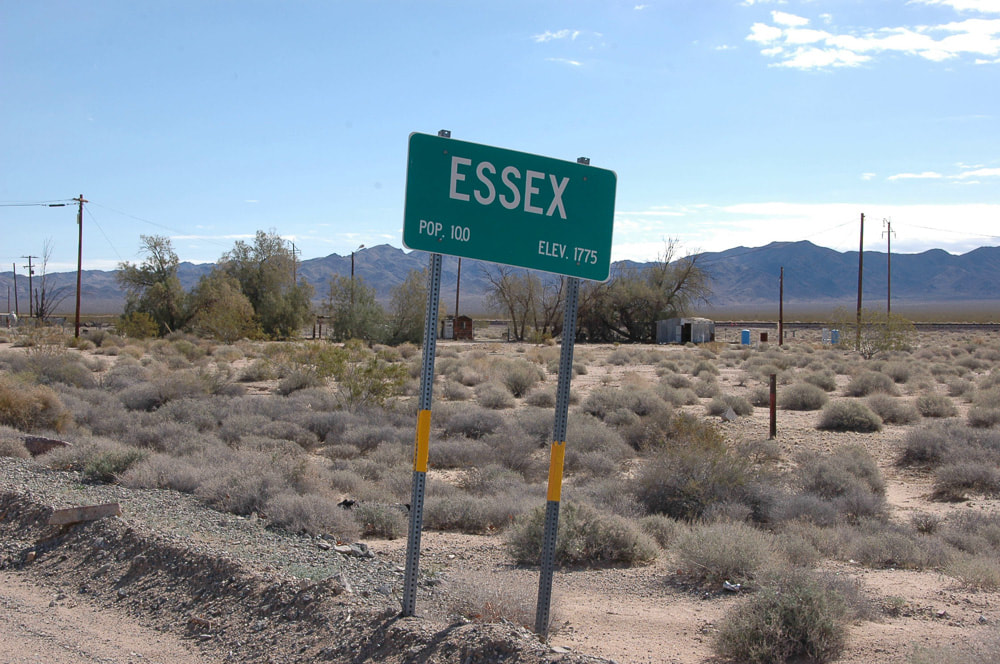Essex is in eastern San Bernardino County, California, about 45 miles west of Needles and was initially established by the Southern Pacific Railroad (later the Atchison, Topeka and Santa Fe Railway, and now the Burlington Northern Santa Fe Railway) in 1883 as a railroad maintenance camp. It was originally called Edson, but sometime prior to 1915 the name was changed to Essex -- the railroad retained the precedent of naming the stops between Amboy and Needles in alphabetical order – Amboy, Bolo, Cadiz, Danby, Essex, Fenner, etc. The railroad facilities in Essex at the time were nothing more than a converted box car that was used as a ‘station’, a section house for the railroad workers, and a house for the superintendent and his family.
The original dirt road through Essex that paralleled the railroad and continued to Fenner and Goffs was designated National Old Trails Road by the National Old Trails Road Association in 1913. In 1926, the road was renamed U.S. Highway 66, but it took several years to pave the new highway across the desert and it was paved by the county from west to east; from Barstow to Needles. When the road crews reach Essex in about 1931 the highway engineers realized they could shorten the remaining road length from Essex to Needles by eight miles by constructing a route directly east from Essex to the pass at Mountain Springs rather than following the gradual grade paralleling the railroad through Fenner and Goffs. Thus, was born the Mountain Springs cutoff.
With the bypass to Mountain Springs completed it then became Route 66 and the road through Fenner and Goffs was renamed Goffs Road. The newly paved highway was positioned about an eighth of a mile north of the tracks, where the paved road is today, so Blythe was obliged to relocate his service station up to the new highway so it would be accessible to motorists.
As traffic on Route 66 continued to increase in the 1930s and especially in the late 1940s after WWII, more and more businesses began to be established in Essex. At its peak Essex had 4 gas stations, two garages, two markets, a motel (The Wayside Inn), a post office, and two cafés but not all of them were operating at any one time. There was never a church or cemetery in Essex. A grave for a mother and two children purported to be east of the town in the early 1930s has now been completely erased by time.
In 1929 a school was opened in Essex through the efforts of Mr. Blythe and Mr. G W. Simpson, an Essex resident. Classes were initially held in a converted boxcar and the first teacher to be employed there was Miss Ida Collins. The school eventually was moved to a house that was donated to the school district, but a new school was built in the 1930s to accommodate from 20 to 30 students in multiple grades in two separate classrooms. In 1940 Essex received a newly purchased school bus that featured “all-steel body, shatter-proof glass, hydraulic brakes, insulated gas tank, and a rear door exit.” Exa (Derm) Neilson, wife of Johnny Neilson from Danby and Mrs. Howard taught classes in Essex for most of the time the school was open, and Mr. Rayburn Werts was the sole teacher in later years just before the school closed in 1967. Although Mr. Werts was the only teacher at the time, the school principal, Mr. Tony Johnson, was in Needles.
The Essex school closed in 2002 because of the declining population in and around Essex and thereafter children had to travel 40 miles to Needles to attend school. When the railroad ceased to require employees to be stationed at Essex the house formerly used by the railroad superintendent was donated to the school and was moved to the school grounds and used as a teacher’s residence.
- Mary Blythe, daughter of Mr. Blythe who established the town, married Walt Smith and for a time in the 1960s they ran the Mobil service station adjacent to the post office.
- Doug and Patsy Smith also lived in Essex and ran John Bentley’s Shell service station.
- Jerry Smith (Doug’s brother), a truck driver, retired to Essex with his wife Virginia who worked in the school cafeteria and as a teacher’s aide.
- Erv Smith and his wife Helen and their three daughters lived for a time about nine miles south of Essex near Weaver’s Well and later moved to Essex and ran the Wayside Inn.
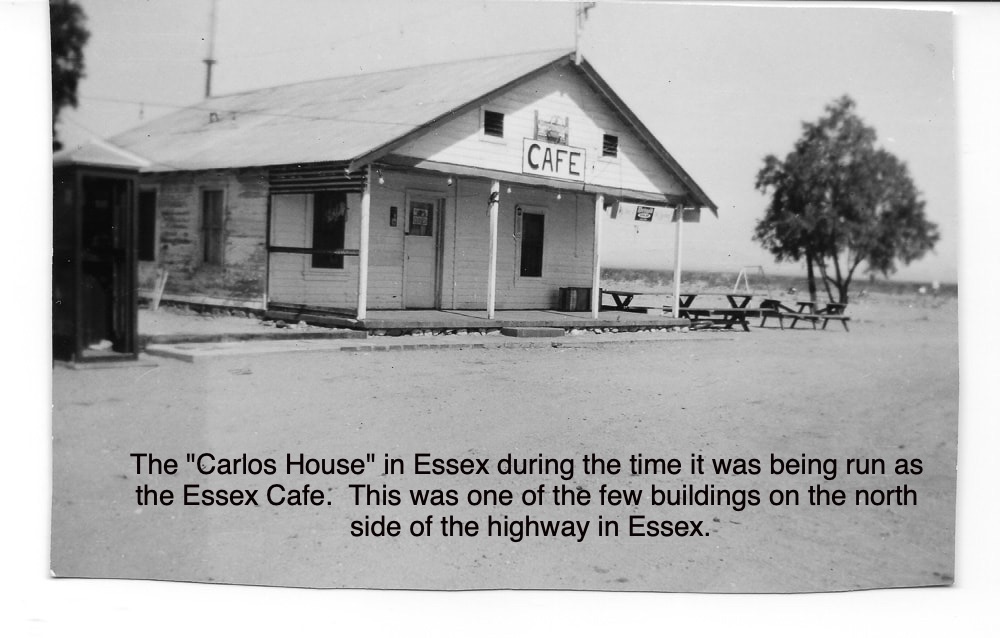
The Wayside Inn, on the west end of Essex, was built in the early 1930s and consisted of a cafe, grocery store, a garage, a gas station and 14 motel cabins. It was the only motel ever operating in Essex. In the early years it was run by Mr. and Mrs. Fred Miller, but whether they were the first owners is uncertain. The motel caught fire in the mid-1940s when the Millers were running it, and the property was then purchased by Mr. & Mrs. Burl Chambers who rebuilt it and ran it from about 1946 until about 1950.
In later years the Wayside Inn had several different owners/operators including Fred Boyer and Uell Woods of Phoenix, Arizona who leased the motel from Burl Chambers in 1950, Ervin Smith ran it for a while, and in the early 1960s it was run by a family named Finzell [sp?]. Records of who owned it and when are confusing, and it seems that eventually the café and grocery store closed and only the service station, garage and motel were in operation. In 1948 Burl Chambers leased the business to Fred Boyer and Uell Woods from Phoenix, but it is doubtful if the men ever followed through with the lease because Burl still owned the property in 1950. A fire destroyed the Wayside Inn again in 1958 and was probably the end of the business; there is no indication that it was ever rebuilt. A couple of the small wooden cabins are still standing amidst the concrete foundations where other cabins once stood, but aside from that and some rusting clothesline poles little else remains.
Motorists driving into Essex today are greeted by a green highway sign that reads “Essex pop. 100, elev. 1775”. Although the elevation is correct, there are only 3 permanent residents; the basis for the population figure on the road sign was decided upon by the highway department by the number of boxes in the post office.
Note: With the exception of the Highway Department maintenance yard almost the entire property encompassing Essex is privately owned and visitors should seek permission before venturing off of the highway.

